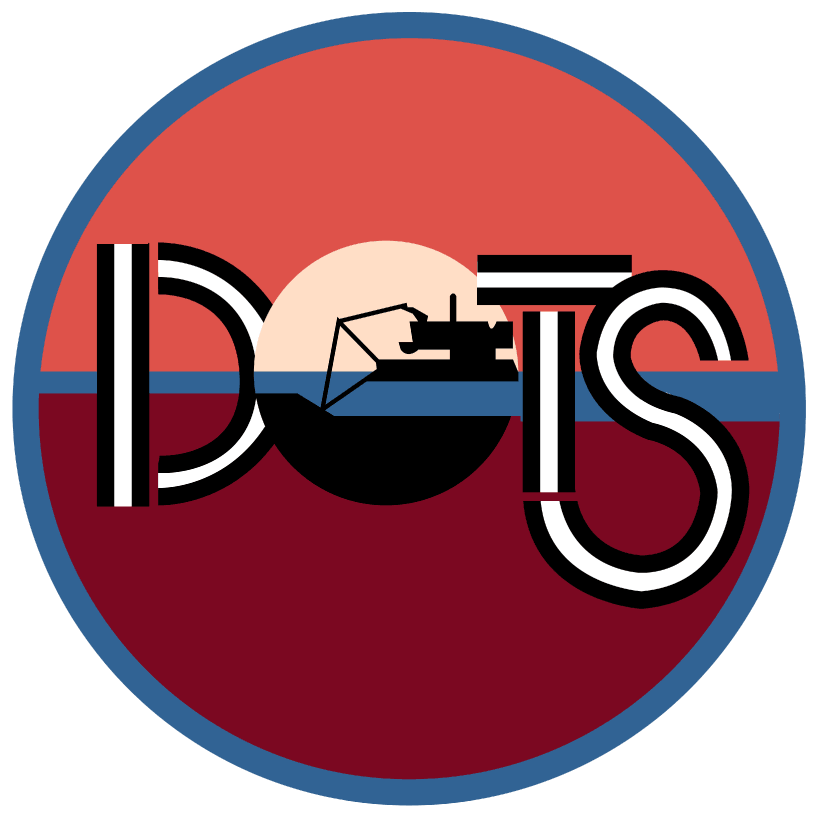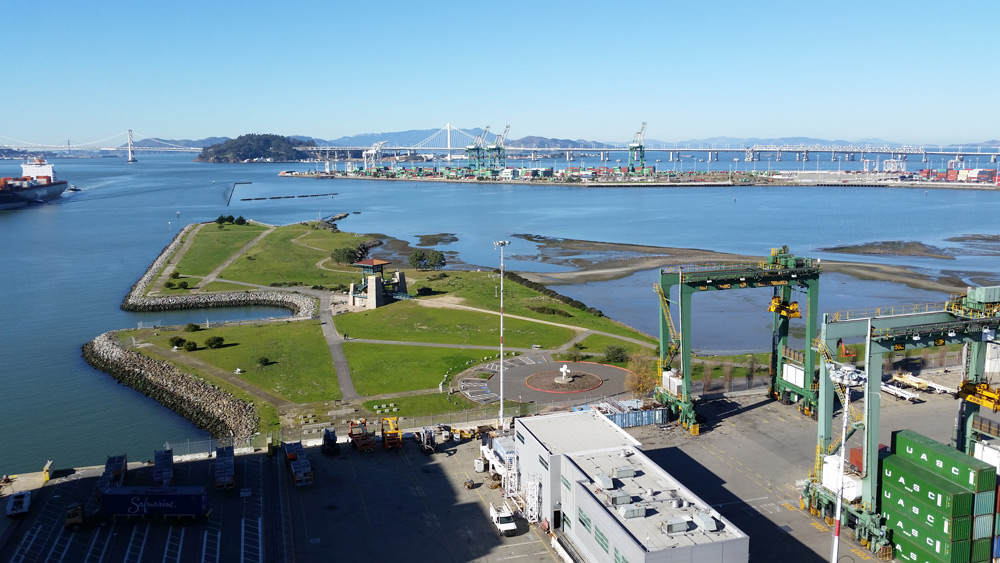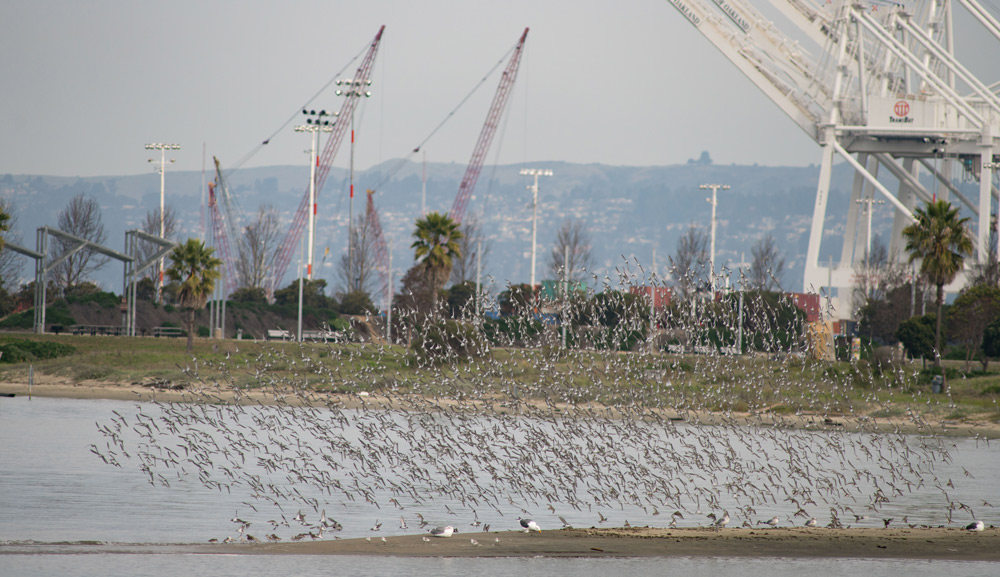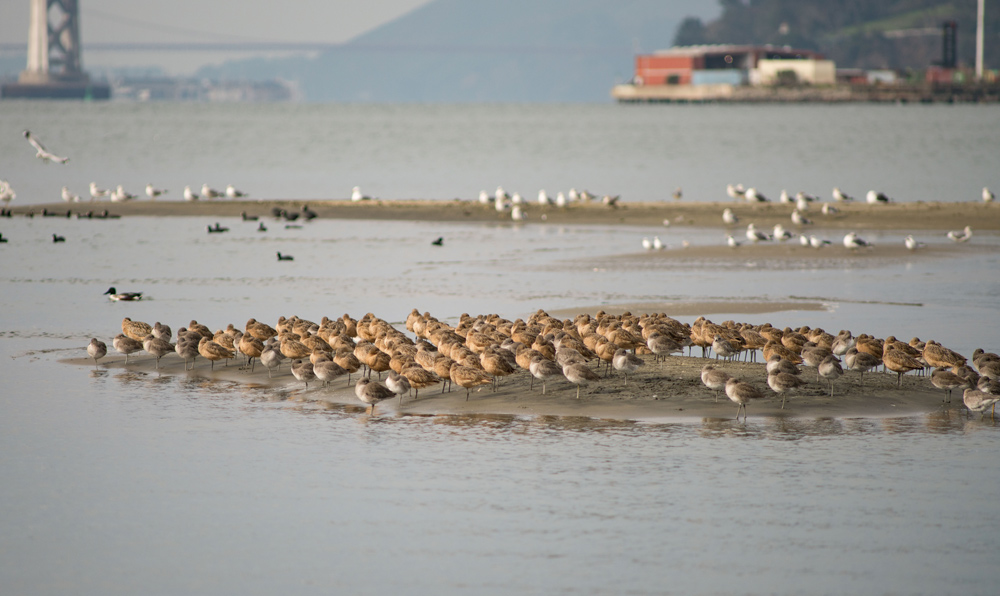Port of Oakland: Middle Harbor Enhancement Area
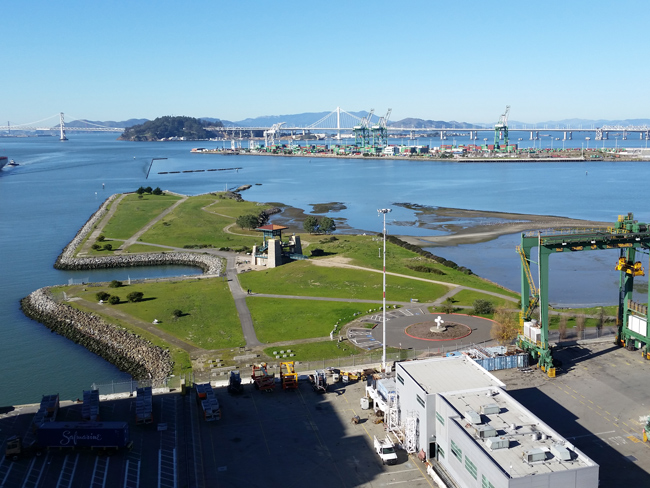
- Title: Port of Oakland: Middle Harbor Enhancement Area
- State: California
- Project type: USACE
- Greater Beneficial Use Area: San Francisco Bay
- Focus Area approximate center coordinates: 37.8021, -122.3261
- Nearest Federal Navigation Project: Oakland Inner Harbor Shipping Channel
- Owner: USACE San Francisco District
- Beneficial Use Categories: Wetland Habitats, Aquatic Habitats
- Dredge type: Hydraulic
- Status: Work is still needed to complete beach and marsh areas. A phase II eelgrass planting will be implemented once funding is available.
- Keywords: eelgrass, mudflat, Middle Harbor Shoreline Park, Middle Harbor Enhancement Area
Description:
The Port of Oakland in San Francisco Bay, California, is the fourth largest container port in the U.S., generating over $1.4 billion in revenue and supporting over 15,000 jobs. Its strategic capital expansion plan, Vision 2000, aimed at improving operational capacity while fulfilling its commitment to community and environmental stewardship.
One of the cornerstones of the expansion plan was to redirect navigation and shipping from the Port’s Middle Harbor Basin to the Inner Harbor, necessitating the deepening of the Inner Harbor Shipping Channel (IHSC) to accommodate modern ships. The Middle Harbor Enhancement Area (MHEA), covering 181 acres, was identified as the location to utilize the dredged sediment from IHSC, aiming to support fish, wildlife, and recreation/education activities by transforming the former Middle Harbor into shallow water habitats and a public park, thus revitalizing historical ecosystems that sustain diverse marine and avian species.
To achieve Vision 2000’s objectives, the Port created an advisory committee including wildlife biologists from the California Department of Fish and Wildlife, the U.S. Fish and Wildlife Service, the USACE San Francisco District (SPN), and community members. The committee developed a conceptual design for the MHEA featuring mudflats, 55-acres of subtidal area with the potential to support eelgrass (Zostera spp.), beaches, a 5-acre marsh, and four 5,000-square-foot bird roosting islands. Project goals included increasing fish diversity and populations, bird foraging areas, and eelgrass habitats.
Between 2003 and 2007, SPN dredged the IHSC to achieve a 50-foot channel depth. During this dredging project, approximately 6 million cubic yards of clean sediment were transported to and placed in the MHEA. However, the challenge of creating a suitable substrate for eelgrass, which requires stable sandy or muddy bottoms, emerged.
The site was shaped in 2016 with 400,000 cubic yards of material moved to ensure that substrate at the sediment surface was suitable for eelgrass establishment. Eelgrass planting began in 2019 throughout an approximately 101-acre area. Additional limited plantings have been implemented to inform the project team on the areas where eelgrass will most likely persist and expand. A phase II planting will be performed once funding is available.
Monitoring reports from Golden Gate Audubon indicate the MHEA has become a birding hotspot and important breeding, foraging, and stopover location for a wide variety of shorebirds. Monitoring and maintenance will continue through 2029 to ensure the area’s ecological success. Additionally, the project facilitated the 38-acre Middle Harbor Shoreline Park, reintroducing public access to a space closed since the 1940s and offering recreational opportunities to the community.
The Port of Oakland’s MHEA project highlights the benefits of using dredged sediment in nature-based restoration programs to create shallow water habitats and enhance navigation capabilities while collaborating with a variety of stakeholders to achieve environmental and community goals.
Gallery:
Further readings:
- Johnck E. (2018). Port of Oakland's Vision 2000 Middle Harbor Basin Projects, Oakland, CA, USA.
- Mott MacDonald. (2024). Restoring an Eelgrass Habitat After 70 Years.
- USACE San Francisco District. (2024). Oakland Harbor - 50 Navigation Improvement.
- Winzler & Kelly, Merkel & Associates. (2002). Middle Harbor Enhancement Area: Construction Period and Long-Term Monitoring, Maintenance and Adaptive Management Program. Prepared for USACE San Francisco District and Port of Oakland. May 21.
Presentations:
- Fenical S, Trivedi D, Rudolph B. (2020). Middle Harbor Enhancement Area Technical Advisory Committee Beach Enhancement Options: Analysis Overview and Recommended Option. May 28.
- Johnck E. (2018). Port of Oakland Vision 2000 Middle Harbor Basin Projects. Presented at PIANC World Congress, Panama City, Panama. May 7.
- Port of Oakland. (2000). Vision 2000: Maritime Development Program.
- Port of Oakland, USACE San Francisco District. (2019). The Middle Harbor Enhancement Area. April 11.
- Port of Oakland, USACE San Francisco District. (2020). Middle Harbor Enhancement Area: Ancillary Feature Design via Design Charrette. September 22.
Website links:
- Port of Oakland. (2024). Middle Harbor Enhancement Area Technical Advisory Committee.
- Port of Oakland. (2024). Middle Harbor Shoreline Park.
